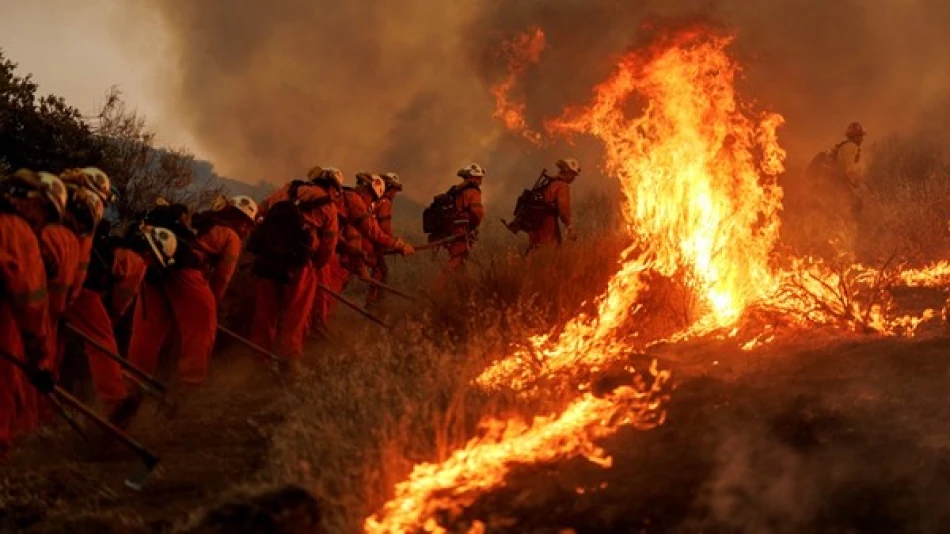
Thousands Evacuated as Devastating Los Angeles Wildfire Rages
California's Canyon Fire Forces Mass Evacuations as Climate Crisis Intensifies Wildfire Threat
A rapidly spreading wildfire north of Los Angeles has forced thousands to flee their homes, marking another devastating chapter in California's escalating battle against increasingly destructive blazes. The Canyon Fire, which erupted Thursday afternoon and consumed over 19.7 square kilometers within hours, underscores how climate change is transforming wildfire season into a year-round emergency that threatens communities and strains firefighting resources.
Massive Emergency Response Mobilized
Fire officials deployed 400 firefighters alongside numerous helicopters and aircraft to combat the blaze, which remained active late Thursday as it spread eastward into Los Angeles County. The Ventura County Fire Department reported the fire's rapid expansion through mountainous terrain, an area particularly vulnerable to wind-driven blazes.
Evacuation orders affected approximately 2,700 residents and 700 buildings in Los Angeles County alone, while warnings extended to an additional 14,000 residents and 5,000 structures. This scale of displacement reflects California's growing challenge of protecting communities built in wildfire-prone zones.
Dangerous Weather Conditions Persist
The National Weather Service forecast hot, dry conditions for Friday, with temperatures reaching nearly 38°C (100°F) – prime conditions for fire spread. Morning winds are expected to remain light but could shift to south-southwest patterns by afternoon, potentially driving flames toward populated areas.
These weather patterns mirror the conditions that have made California wildfires increasingly unpredictable and destructive. The combination of prolonged drought, high temperatures, and shifting wind patterns creates a perfect storm for rapid fire expansion.
Recurring Threat in Fire-Prone Region
The Canyon Fire struck near Lake Piru in the Los Padres National Forest, close to the popular Lake Castaic recreation area. This region experienced devastating destruction just months ago when the Hughes Fire consumed 39 square kilometers in six hours this past January, prompting evacuation orders or warnings for approximately 50,000 people.
The recurring blazes in this area highlight a troubling pattern: California's fire season now extends year-round, with winter fires becoming increasingly common due to persistent drought conditions and climate change.
Economic and Social Impact
Beyond immediate safety concerns, these repeated evacuations impose significant economic costs on communities and strain emergency services. Insurance companies face mounting claims, while local businesses suffer from repeated closures and evacuation orders. The psychological toll on residents living under constant threat of evacuation creates lasting community trauma.
The frequency of major fires in the same regions suggests California must reassess development patterns in high-risk zones and invest more heavily in fire prevention infrastructure. As climate change intensifies, the state's current firefighting approach – primarily reactive rather than preventive – may prove insufficient for protecting growing populations in fire-prone areas.
Looking Forward
The Canyon Fire represents more than an isolated emergency; it's part of California's new reality where massive wildfires can erupt any month of the year. State officials and communities must adapt to this changed landscape through improved early warning systems, enhanced evacuation procedures, and potentially difficult decisions about where future development should occur.
As firefighters continue battling the blaze, the broader question remains: how can California protect its residents while acknowledging that the fire threat will likely worsen in coming decades?
 Layla Al Mansoori
Layla Al Mansoori







